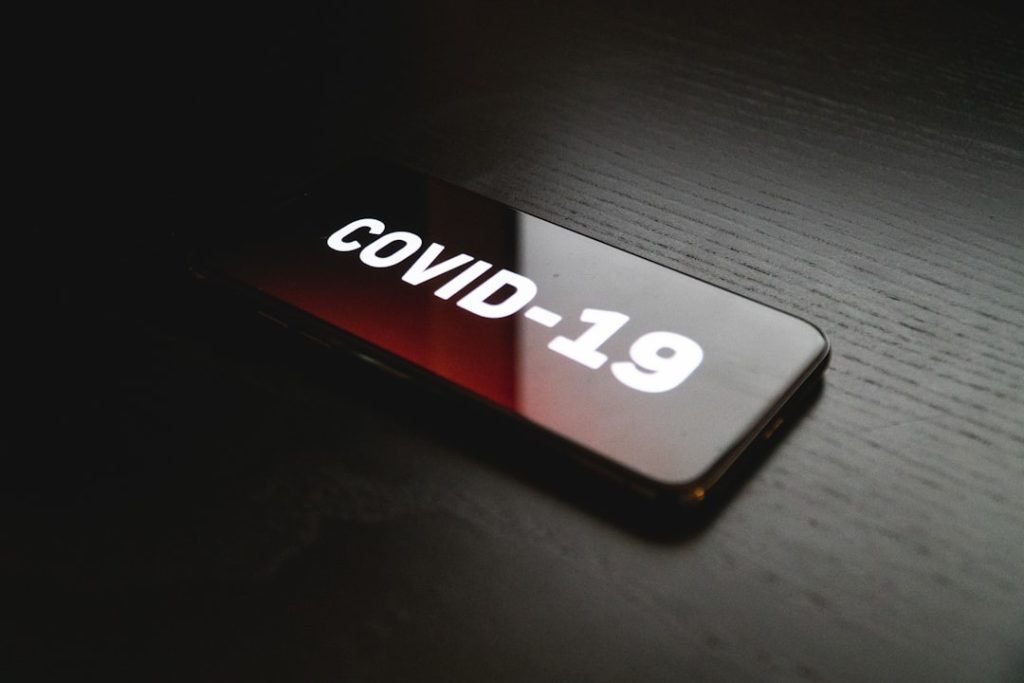Have you ever talked up your favorite coffee maker, running shoes, or skincare set and convinced a friend to buy it? Imagine getting paid for each of those honest recommendations, without the hassle of packaging, shipping, or handling customer service. That’s the heart of affiliate marketing. The best part is, social media makes it easier than ever, and you do not need a huge audience or fancy website to start.
This detailed guide breaks down everything a beginner needs to earn real money with affiliate marketing in 2025, from choosing products and crafting posts to earning commissions and avoiding common mistakes.
What Is Affiliate Marketing and Why Does It Work?
Affiliate marketing is simply recommending products or services you already love, and earning a small percentage of every sale made through your unique tracking link. Companies want real people vouching for their products. Social media makes it easier to share those recommendations, building trust and influencing buying decisions.
Unlike direct selling, you do not buy or ship anything yourself. Brands give you special links or codes. You share those links through your Instagram bio, Facebook posts, TikToks, or YouTube videos. Followers click, buy, and you get paid, usually once a month.
The link between trust and influence is strong. If you’ve built any type of social following, even a few hundred people, your recommendations can mean more to them than the best ad from a five-million-dollar brand.
Is Affiliate Marketing Only for Influencers with Huge Followings?
No. Regular people earn real money from affiliate partnerships every day. Micro-influencers (people with fewer than 10,000 followers) often have higher engagement rates than “big names,” especially in niche markets like vegan cooking, DIY crafts, or fitness for parents. What matters most is authenticity and connection, not size alone.
That said, your earnings are based on reach and trust. If you have 2,000 followers who always check your stories, you can do well by sharing honest reviews and clever tips. If you have 20,000 or more, the opportunity grows, though competition and expectations rise too.
Step One: Pick Your Niche and Products to Promote
The best affiliate marketers focus on their natural passions. Are you obsessed with home decor? Are you a running fanatic, a tech geek, or a parent who loves clever toys? Your niche should match your real interests. If you try to sell kitchen gadgets while posting mainly about traveling, the connection will feel off and your followers will notice.
Questions to Ask Yourself:
- What do I use and talk about every week?
- What do my friends ask me for advice about?
- Which products get the most questions or comments when I mention them?
- What problems do I solve for my community, and are there helpful products related?
Matching your niche to your lifestyle helps build trust. When you genuinely love something, your recommendations feel organic, not salesy.
Step Two: Find Affiliate Programs That Fit
There are thousands of affiliate programs out there. Some focus on physical goods, others on apps, subscriptions, or online courses. Here are a few beginner-friendly places to look:
Amazon Associates: Millions of products, easy signup, and quick payouts. Commissions are low (usually 1-5%), but almost every physical product you can imagine is included.
ShareASale, CJ Affiliate, Rakuten Marketing: These are “networks” connecting you with hundreds of companies and brands. You can apply to as many programs as you want within these networks, tracking multiple products from one dashboard.
Direct Brand Programs: Many big brands run affiliate programs directly on their websites. For example, Audible, Nike, Sephora, and Target all have affiliate programs—look for “Affiliates” or “Partner” links in their footer menus.
Other Categories: Tech gadgets, fitness apps, recipe services, online courses, travel sites, and even pet products all have steady affiliate opportunities.
Tips for Choosing
- Start with products you own and love. If you do not genuinely recommend it, skip it.
- Check commission rates and terms. Some pay a flat dollar amount per sale, others a percentage.
- Look at cookie duration. Longer is better (gives followers more time to buy after clicking).
- Research support and transparency. Reliable programs have proven tracking and regular payments.
Step Three: Sign Up and Get Your Affiliate Links
Once you pick a product and program, signup is usually simple. You may need to fill out a short application and share your website or social handles. Within a few hours (or days), you’ll be approved and given access to your affiliate dashboard.
Look for your personal referral or tracking link. For Amazon, the dashboard is straightforward, letting you choose any item and create a shareable link. Other programs use portals where you can generate special links for each product.
Most also provide banners, logos, or product images. Use those if they fit your content style.
Step Four: Create Content That Connects and Convinces
People ignore cold sales pitches. They love honest moments and useful tips. Here are real-world content ideas you can try:
- Photos or stories of your morning routine featuring your favorite coffee maker.
- A quick TikTok showing three ways you use your budget planner.
- YouTube tutorials reviewing two skin-care products you actually use.
- Instagram carousels with “My Favorite Kitchen Gadgets Under $30,” linking each item.
- Blog posts or Facebook notes sharing how a tool solved your problem.
Stories work best. “I started meal prepping, and this container set saved me $20 a week” goes further than “Buy these containers.” Videos get especially strong engagement, showing a product in use feels personal.
Step Five: Disclose Affiliate Relationships
You must let your audience know you could earn a commission if they buy. Not only is this required by law, it is good practice. Simple, direct disclosures help keep your recommendations trustworthy.
- This post contains affiliate links. I get a small commission if you buy, at no extra cost to you.
- I only share products I’ve used and honestly love; links below may earn me a commission.
FTC rules require some form of disclosure anytime you share affiliate links, even on stories and reels. Being transparent builds trust.
Step Six: Optimize and Share Your Links Everywhere
Most social platforms only let you share one or two clickable links. To maximize clicks, use tools like Linktree or Milkshake to create a single page for all your affiliate links. Update your Instagram or TikTok bio to point visitors there.
Also, add links to your YouTube video descriptions, Pinterest pins, blog posts, and Facebook pages. The more natural places your links appear, the greater your potential earnings.
Step Seven: Track Performance and Refine Your Strategy
Most programs offer dashboards showing clicks, sales, and commissions. This lets you see which products get the most attention. Regularly check what’s working:
- Is a TikTok product demo outperforming a longer YouTube video?
- Do users prefer quick Instagram story shoutouts or longer carousels?
- Which season or holiday sees the most clicks for your niche?
Switch up your approach as you learn. Try different call-to-actions (“See my full review,” “Check the link in my bio,” “Swipe up to shop my favorites”). Even small tweaks can boost results.
Step Eight: Grow, Collaborate, and Build Passive Income
Top affiliate marketers often focus on evergreen products—things that sell year-round. But don’t be afraid to jump on trends, gift guides, or seasonal posts. Sharing your “Back-to-School Must-Haves” or “Holiday Gift Picks for Busy Parents” is a great way to earn during high-traffic times.
Look for ways to collab. Team up with other creators for joint reviews, live Q&As, or challenge each other with themed posts. Cross-promotion puts your content in front of new eyes.
Over time, build an email list for direct promotion. Loyal followers who sign up for your newsletter are often the most likely to click and buy.
How Much Can You Earn? Real Numbers, Honest Expectations
Earnings vary. Some people make $100 or $200 a month, while others clear $2,000 or more. Several factors affect your results:
- Audience size and engagement. A smaller but loyal audience often beats a large, uninterested one.
- Niche. Focused topics like tech, fitness, or parenting see higher conversion rates.
- Product price and commission. High-ticket products or services, like mattresses or courses, offer bigger per-sale commissions.
- Content quality and frequency. Regular posting builds more potential for clicks and sales.
Many beginners hit their first $100 month after a few weeks of effort and learning. Some see steady growth to $500 or $1,000 per month by adding new products and refining what works.
Stories from YouTube creators, Instagram micro-influencers, and TikTok reviewers show consistent success once they build up a library of helpful product-focused content.
Mistakes to Avoid
- Promoting products you have not used. If you would not recommend it to a friend, don’t share it with your audience.
- Flooding feeds with sales links. Too many pitches will cost you followers and engagement.
- Ignoring analytics. If you do not track which posts work best, you miss out on valuable learning.
- Skipping the disclosure. Hiding affiliate relationships could mean fines and lost trust.
- Quitting too soon. It takes time for algorithms and audiences to trust your new focus.
Getting Started Today: Your Mini-Checklist
- Choose a niche or interest you already love.
- Sign up for one affiliate program (Amazon is easiest for beginners).
- Pick three products you use weekly.
- Snap a photo or short video of each product in your routine.
- Write honest captions, add the affiliate link, and disclose your partnership.
- Share on your favorite social channel and see what happens.
- Track clicks and tweak your next post based on what worked.
Final Thoughts: Building Real Income with Honesty and Heart
Affiliate marketing on social media is about sharing genuine solutions and earning fairly for your influence. Even small accounts can make a real impact by focusing on what really helps their audiences. Respond to comments, answer questions, and share how products fit into your life.
As you build experience, you can scale up: offer more in-depth content, experiment with platforms and collaborations, or grow your audience by reaching out to communities that match your interests.
Affiliate income will not make you wealthy overnight, but with steady effort and a commitment to honest recommendations, it can become a key part of your side hustle strategy. The next time someone asks for your favorite budgeting app or coffee grinder, know you are helping and earning at the same time.
Get started, share what you love, and let your voice become your business. In the world of social media affiliate marketing, authenticity always wins.

